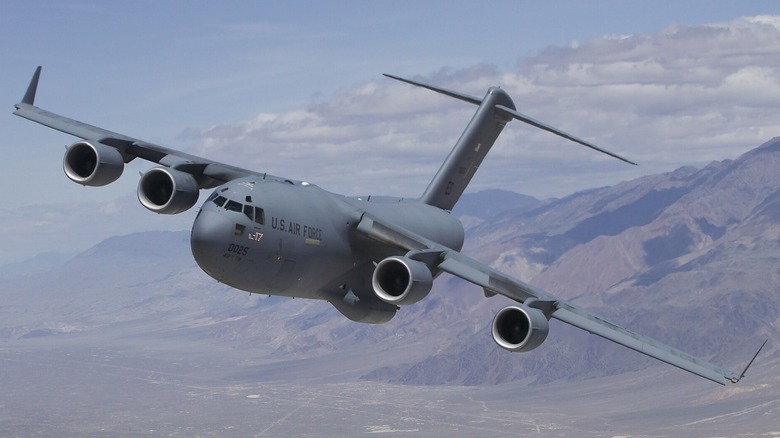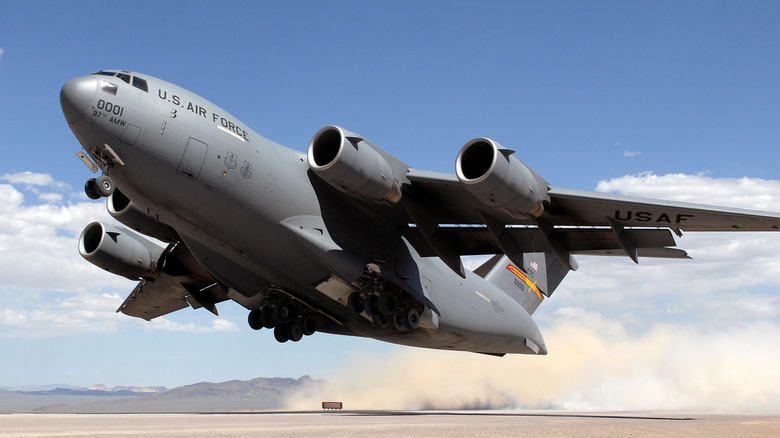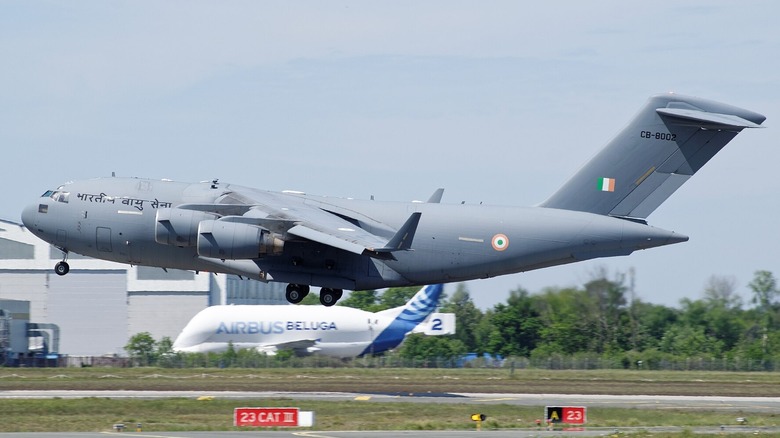The C-17 Globemaster III's Unique Ability That Makes It Fly Like A Fighter Jet
The C-17 Globemaster III is one of several aircraft the United States has that can deploy all four of its thrust reversers in flight. It's a tactic called a reverse-idle descent, and it's something no other cargo jet is certified to do. By pitching the nose down steeply and redirecting engine exhaust forward and upward, the Globemaster III can drop from 30,000 feet to 5,000 feet in just two minutes without over-speeding.
Most aircraft rely on gravity and idle power to descend. The Globemaster III throws 135,000 pounds of thrust into reverse mid-air, using its thrust reverser buckets to redirect exhaust 135 degrees forward and upward, creating drag and allowing it to fall up to 15,000 feet per minute while still maintaining full control. It's a controlled dive that can swing G-forces from 0 to 1.4 G-forces in mere seconds.
Most Commercial jets and military transports simply don't have the structural protections or control systems to pull this off. The Globemaster III was designed from day one to descend like a fighter while carrying cargo the size of a tank.
How the jet achieves such agility for its size
For a jet that weighs close to 600,000 pounds fully loaded, this C-17 handles with shocking precision. Its agility starts with a full fly-by-wire system, the first of its kind in a heavy-lift cargo plane. Pilot inputs go through redundant flight computers that blend throttle, spoiler, rudder, and aileron movements into coordinated commands. The system protects against pulling too many G's while still allowing aggressive bank and pitch angles usually reserved for fighters.
It doesn't stop there. The jet's high-lift wing design, externally blown flaps, and triple-redundant thrust reverser interlocks give it stability under extreme conditions. Spoilers and reverse thrust work together to control descent without stalling the wings. Onboard systems detect bucket asymmetry and will shut down problems automatically.
Even the landing gear and carbon brakes are built to handle rough fields, rapid deceleration, steep flares, and short-roll landings at maximum weight, complementing the descent control during assault landings. Every part of the Globemaster III was designed to let it move like something half its size and survive doing it.
The military advantages the Globemaster has in real-world missions
This descent profile ability can play a crucial role in real-world scenarios and operations. Reverse-idle descents give Globemaster III crews more than just a dramatic maneuver; it offers a precise arrival timing in unpredictable or contested airspace. When delivering critical supplies, vehicles, or personnel near hostile zones, every second counts.
Being able to drop altitude quickly and land on short, improvised runways without circling or relying on ground-based support reduces risk, and speeds up the handoff. That kind of maneuverability opens the door tactically, but it also changes how missions are formed from the ground up. Instead of waiting for windows to operate or depending on fighter escorts, a single C-17 Globemaster can insert or extract assets under tight timelines. The Globemaster's versatility lowers vulnerability, shortens exposure, and keeps operations moving fast, without needing to rewrite the plan every time conditions change.


